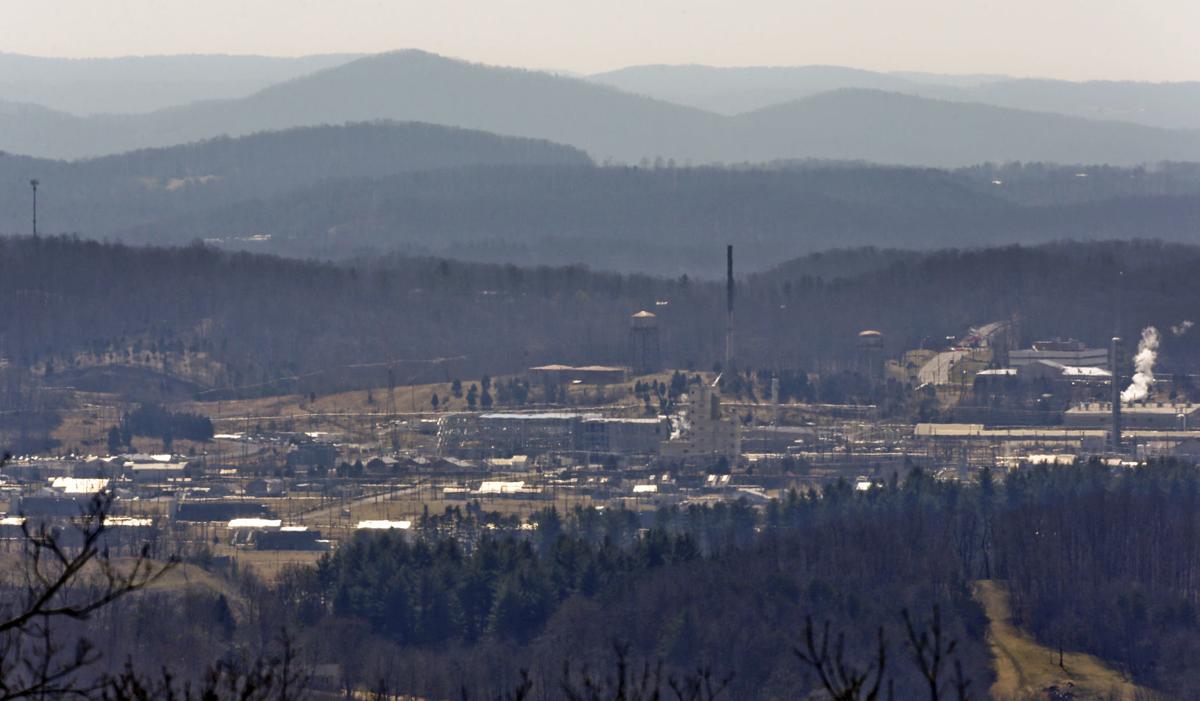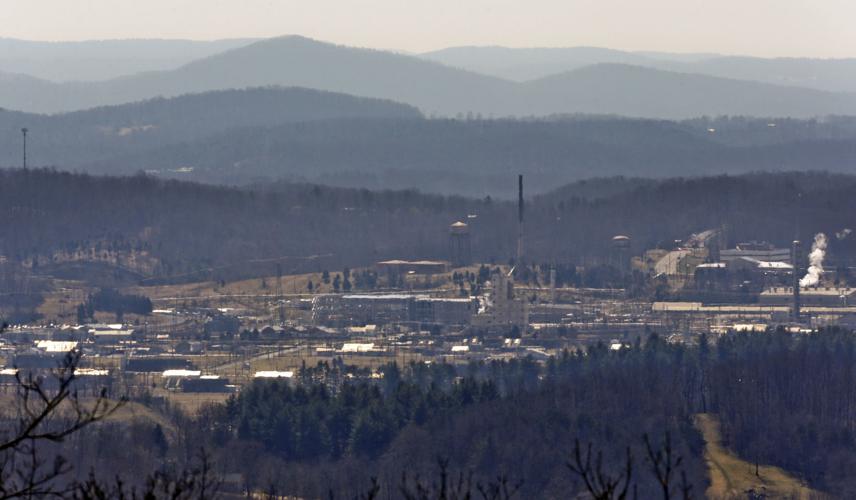Since April, four spills or leaks of nitric acid at the Radford Army Ammunition Plant have been reported to environmental regulators. Two of the incidents also involved sulfuric acid.
Records from the Virginia Department of Environmental Quality document a spill of nitric acid from a railcar on April 22, a continuous leak of nitric and sulfuric acids from a wastewater pipe from June 10 through June 26, a release of nitric and sulfuric acids on June 27, and a spill of nitric acid on July 8.
In what were described as separate incidents, thousands of gallons of the highly corrosive acids used in the manufacture of munitions were released onto the grounds of the sprawling plant also known as the Radford arsenal.
There were no reported injuries or risks to the public, and DEQ said environmental damage was limited to the immediate areas of the spills or leaks.
People are also reading…
Nonetheless, a group of concerned citizens said the mishaps are part of a bigger problem.
ãThese acid spills are not isolated incidents,ã said Alyssa Carpenter, director of Citizens for Arsenal Accountability. ãTheyãre part of a larger pattern of failures by the arsenal that have released thousands of gallons of nitric and sulfuric acid into our environment.ã
ãClearly, not enough has been done by the arsenal to prevent unintentional releases of hazardous substances,ã Carpenter wrote in an email.
Asked about those concerns and what actions are being taken to address them, Mark Kane, a spokesman for the Joint Munitions Command, which manages the nationãs military ammunition plants, released the following statement:
ãEach incident is regarded as unique. Radford pursues continuous improvement and sustainability of the siteãs infrastructure, including implementation of necessary reviews, inspections, and maintenance.ã
Kane said repairs have been made to malfunctioning equipment blamed for the three most recent incidents. The April 22 spill of nitric acid was caused by a failed gasket in a railcar that was not part of the arsenalãs infrastructure, he said.
All four of the spills were reported by arsenal officials.

Shells at the end of the production line wait to be packaged and crated at Radford Army Ammunition Plant, which produces propellants for military weaponry and disposes of industrial waste created by the process.
In one of the three most recent incidents, contaminated soil and dead grass was neutralized before it was removed and prepared for disposal in a landfill, according to John Giese, director of DEQãs office of Pollution Response and Emergency Preparedness.
Impacted soil in the other two areas has been identified. As of Friday, the agency was waiting for additional information from the arsenal about how much soil has been removed and details concerning its final disposal.
ãBased on the information provided to date with all three releases, the soil contamination was localized and off-site impact did not occur,ã a DEQ land protection manager wrote in an email Friday to Giese. ãThe releases were neutralized and environmental impact was minimal.ã
Details of the four pollution incidents
since April
Spread out over nearly 7,000 acres on the border of Montgomery and Pulaski counties, the arsenal has been cited multiple times over the years by DEQ for excessive releases of pollutants. It is the stateãs top source of hazardous materials that are tracked by the Virginia Toxics Release Inventory, an annual report.
While officials at the plant acknowledge that making explosives is a dangerous business ã as they did in February after an explosion seriously damaged one of its many buildings ã they say many safety protocols are in place to protect public health and the environment.
On April 22, about 6,500 gallons of nitric acid spilled from a railcar in the arsenalãs railyard. An arsenal employee was airlifted from the plant to Carilion ôÕѿǨû§¿ìë½ Memorial Hospital for observation.
The employee was released the next day. At the time, arsenal officials declined to comment on the individualãs condition or whether they had suffered any injuries. No details were provided about the employeeãs contact with hazardous materials.
Exposure to nitric acid can cause severe burns and is toxic when inhaled, according to the National Institutes of Health. Justine Barati, director of public and congressional affairs for the munitions command, has said the acid that spilled into a small area of the railyard was a diluted form that had been mixed with water.
An investigation of the railcar and its owner was underway by the U.S. Department of Transportation, Barati wrote in a July 8 email.
On June 26, arsenal officials discovered a leak from an above-ground system of pipes that carries nitric and sulfuric acid waste from the nitrocellulose production area to an outfall, where it is treated before being released into the New River.
Multiple leaks per day occurred between June 10 and June 26, according to a report to DEQ from Nelson Hernandez, environmental manager for BAE Systems, the private company contracted by the Army to operate the arsenal.
Because the acid was mixed with water, it was not possible to determine how many gallons were released. But calculations put the amount of nitric acid at 2,131 pounds, Barati said. The amount of sulfuric acid was calculated to be 1,657 pounds.
The leak was attributed to a plugged sump that caused a backup in drain lines, which allowed the acidic wastewater to flow from a compromised secondary containment trench down a grassy slope.
Crews neutralized the acid with soda ash. Barati wrote in an email that ãno acid left the facility, and no acid was released into the New River,ã which makes a horseshoe loop through the plant.
The outfall at the river is equipped with controls to treat water with high levels of acid before it is discharged in accordance with regulatory requirements, she said.
On June 27, a failed flange, which was used to connect separate portions of a pipe in the nitrocellulose production area, caused a leak of about 113 gallons of nitric and sulfuric acid.
ãBased on completed evaluations, BAE Systems does not believe that any risk was presented to individuals outside of the manufacturing area ã whether on site or in the local community,ã Hernandez wrote in a report to DEQ.
On July 8, about 29 gallons of nitric acid flowed from a pipe onto the ground in the nitrocellulose production area. Some of the acid leaked from a hole in a Teflon-lined pipe, and a second discharge happened during a planned line break to prepare for repair of the pipe.
ãBAE Systems has completed immediate actions that include repair of the hole in the pipe and... neutralization of the acid,ã a report to DEQ stated. ãAcid release has been determined to be localized to the immediate area of the grassy slope.ã
In her statement, Carpenter said the arsenal needs to do a better job of notifying the public of such events.
ãOur communities should not have to live in fear of threats to our health and safety,ã she said.



















